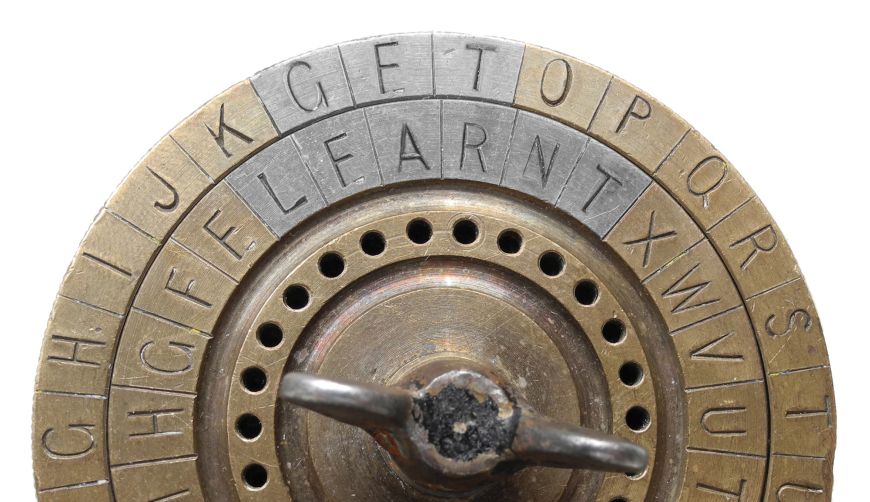Throughout history there has always been a need to keep certain information secret. If these secrets are only whispered among a trustworthy few, then there is little danger of that secret being revealed. But if there’s a chance our message may be read by someone other than our intended recipient, how can we keep the secrecy of our message? Cryptography.
What is it?
Most of us have a general idea of what cryptography is. The word comes from the Greek words kryptos (secret, hidden) and graphein (writing) and it is essentially the practice of securing our information from everyone but our intended recipient. As opposed to steganography, the art of concealing a message, encryption doesn’t hide a message, rather it obscures the meaning of the message.
Encryption is the process of converting readable text, typically called plaintext, into a form that is unreadable to all but the intended recipient. This unreadable text is usually called ciphertext. A cipher, properly defined, is the pair of processes (algorithms) needed to encode and decode the message. This process of encoding and decoding typically relies on an extra piece of information called a key, which tells the encoder and decoder specifically how to apply the cipher.
Atbash Cipher
One of the earliest uses of a simple cryptographic system was by the Jewish people over 2000 years ago. This system is known as the Atbash Cipher which is a form of substitution cipher (one letter is replaced with another to encode the message). For this particular cipher, the alphabet is flipped to find the pairs of letters used in encoding. Examples of its use can be found in the Old Testament.
| A | B | C | D | E | F | G | H | I | J | K | L | M | N | O | P | Q | R | S | T | U | V | W | X | Y | Z |
| Z | Y | X | W | V | U | T | S | R | Q | P | O | N | M | L | K | J | I | H | G | F | E | D | C | B | A |
In this system, “shadycrzy” would be encoded as “hszwbxiab.”
Substitution ciphers are the earliest known encryption techniques. A cuneiform tablet from the 15th century BCE was discovered in Iraq with a recipe for making pottery glaze (valuable information at the time) encrypted with a substitution cipher.
Scytale
The Greeks used a device called a scytale (from the Greek word skutale [baton, cylinder]) to encrypt their messages. The skytale was a cylinder of wood around which would be wound a long, thin parchment. Once the parchment was wound, a message would be written. The message would be unwound and sent to someone with a scytale of equal diameter to be decoded. This method was first described by Plutarch in the 1st century CE, though the existence of scytales had been mentioned earlier. This method of encryption is known as a transposition cipher because the letters of the message weren’t changed, merely rearranged.

The use of the scytale is the first recorded military application of encryption. The Spartans were recorded to have used the scytales in their military campaigns in the 3rd century BCE. Around the same time, the Greek writer Aeneas Tacticus wrote the first known guide for encryption.
Caesar Cipher
The Roman historian Seutonius wrote about a cipher used by Julius Caesar that today bears his name. When sending personal messages, Caesar would shift the alphabet three characters to the left (in this case, the shift of three letters would be the key) and use the corresponding letter pairs to encode his messages. This simplicity of this cipher has led to its wide-spread use throughout history, though it is easily broken today.
| A | B | C | D | E | F | G | H | I | J | K | L | M | N | O | P | Q | R | S | T | U | V | W | X | Y | Z |
| D | E | F | G | H | I | J | K | L | M | N | O | P | Q | R | S | T | U | V | W | X | Y | Z | A | B | C |
In this system, “shadycrzy” would be encoded “vkdgbfucb.”
Next time
Though there was some theoretical innovation beyond these simple ciphers that occurred during this time, the practical application of cryptography would not change for hundreds of years. The next innovation in cryptography happened when the intellectual center of the western world shifted from Christian Europe, to Muslim Asia and Africa.
